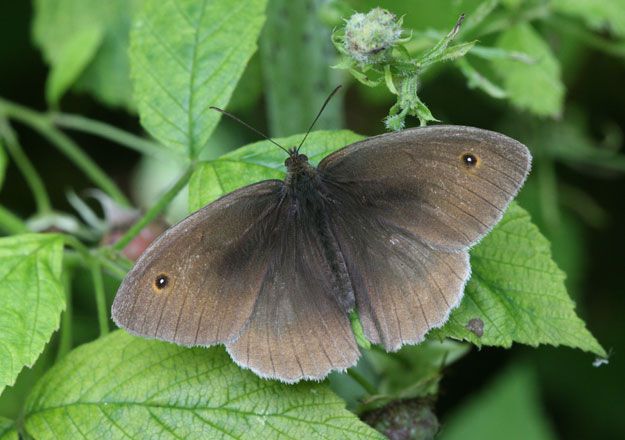- info@sirhowyhillwoodlands.co.uk
- Thomas Ellis Way, Tredegar NP22 4QF
- About Us
- Get involved
- Visit Us
Visit Tredegar & our Woodlands
Come and visit us!
Sirhowy Hill Woodland
Thomas Ellis Way
Tredegar
Blaenau Gwent
NP22 4QF - Wildlife
- Woodland Shop
Latest and greatest products, direct from our
Woodland Shop
Sourced from the Woodlands and the local community.
You have
item(s) in your bag
- Home
- /
- Blog
- /
- Animals & Wildlife
- /
- Butterflies
- /
- Meadow Brown

Scientific name: Maniola jurtina
Meadow Brown
Orange and brown, with black eyespot on forewing tip.
Widespread and common throughout Britain and Ireland. Eyespots have single white pupils unlike Gatekeeper which has two and is smaller and more orange with row of tiny white dots on hind underwings.
The Meadow Brown is the most abundant butterfly species in many habitats. Hundreds may be seen together at some sites, flying low over the vegetation. Adults fly even in dull weather when most other butterflies are inactive.
Regional variations in the spotting pattern on the wings have led to it being studied extensively by geneticists over many years. Larger forms occur in Ireland and the north of Scotland.
It is one of our most widespread species, but many colonies have been lost due to agricultural intensification.
What does the Meadow Brown eat?
The Meadow Brown eats a wide range of grasses are used. Those with finer leaves such as fescues (Festuca spp.), bents (Agrostis spp.) and meadow- grasses (Poa spp.) are preferred, but some coarser species such as Cock’s- foot (Dactylis glomerata), Downy Oat-grass (Helictotrichon pubescens), and False Brome (Brachypodium sylvaticum) are also eaten by larger larvae. Other species of grass are also believed to be used.
What habitat does the Meadow Brown live in?
The Meadow Brown lives in grasslands, including; downland, heathland, coastal dunes, undercliffs, hay meadows, roadside verges, hedgerows, waste ground and and woodland rides and clearings. Also occurs in gardens, parks and cemeteries.
What family does the Meadow Brown belong to?
The Meadow Brown belong to the Nymphalidae family.

Click to view more
Statistics
Scientific Name
Maniola jurtina
Location
England, Wales, Scotland and Ireland
Size
Medium sized
Wingspan Range: 50-55mm
Population
Throughout Britain and Ireland. Distribution Trend Since 1970’s = -4%

Other Wildlife







